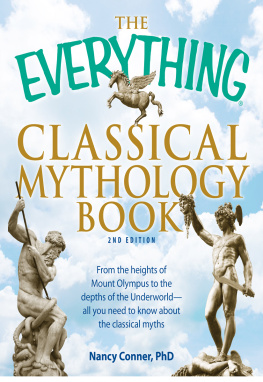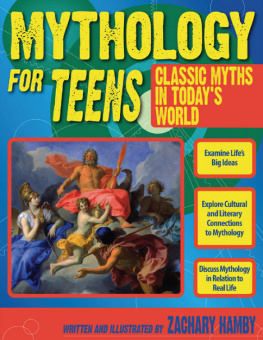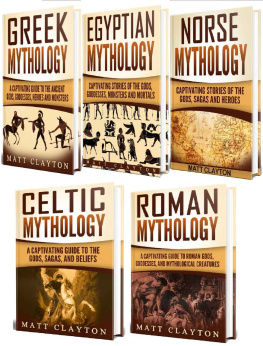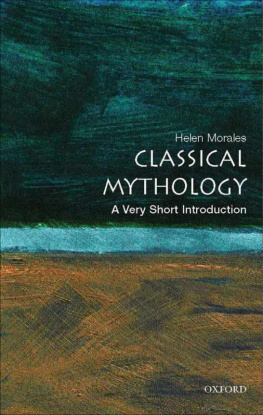Annette Giesecke - Classical Mythology A to Z
Here you can read online Annette Giesecke - Classical Mythology A to Z full text of the book (entire story) in english for free. Download pdf and epub, get meaning, cover and reviews about this ebook. year: 2020, publisher: Running Press, genre: Non-fiction. Description of the work, (preface) as well as reviews are available. Best literature library LitArk.com created for fans of good reading and offers a wide selection of genres:
Romance novel
Science fiction
Adventure
Detective
Science
History
Home and family
Prose
Art
Politics
Computer
Non-fiction
Religion
Business
Children
Humor
Choose a favorite category and find really read worthwhile books. Enjoy immersion in the world of imagination, feel the emotions of the characters or learn something new for yourself, make an fascinating discovery.

- Book:Classical Mythology A to Z
- Author:
- Publisher:Running Press
- Genre:
- Year:2020
- Rating:3 / 5
- Favourites:Add to favourites
- Your mark:
- 60
- 1
- 2
- 3
- 4
- 5
Classical Mythology A to Z: summary, description and annotation
We offer to read an annotation, description, summary or preface (depends on what the author of the book "Classical Mythology A to Z" wrote himself). If you haven't found the necessary information about the book — write in the comments, we will try to find it.
Classical Mythology A to Z — read online for free the complete book (whole text) full work
Below is the text of the book, divided by pages. System saving the place of the last page read, allows you to conveniently read the book "Classical Mythology A to Z" online for free, without having to search again every time where you left off. Put a bookmark, and you can go to the page where you finished reading at any time.
Font size:
Interval:
Bookmark:
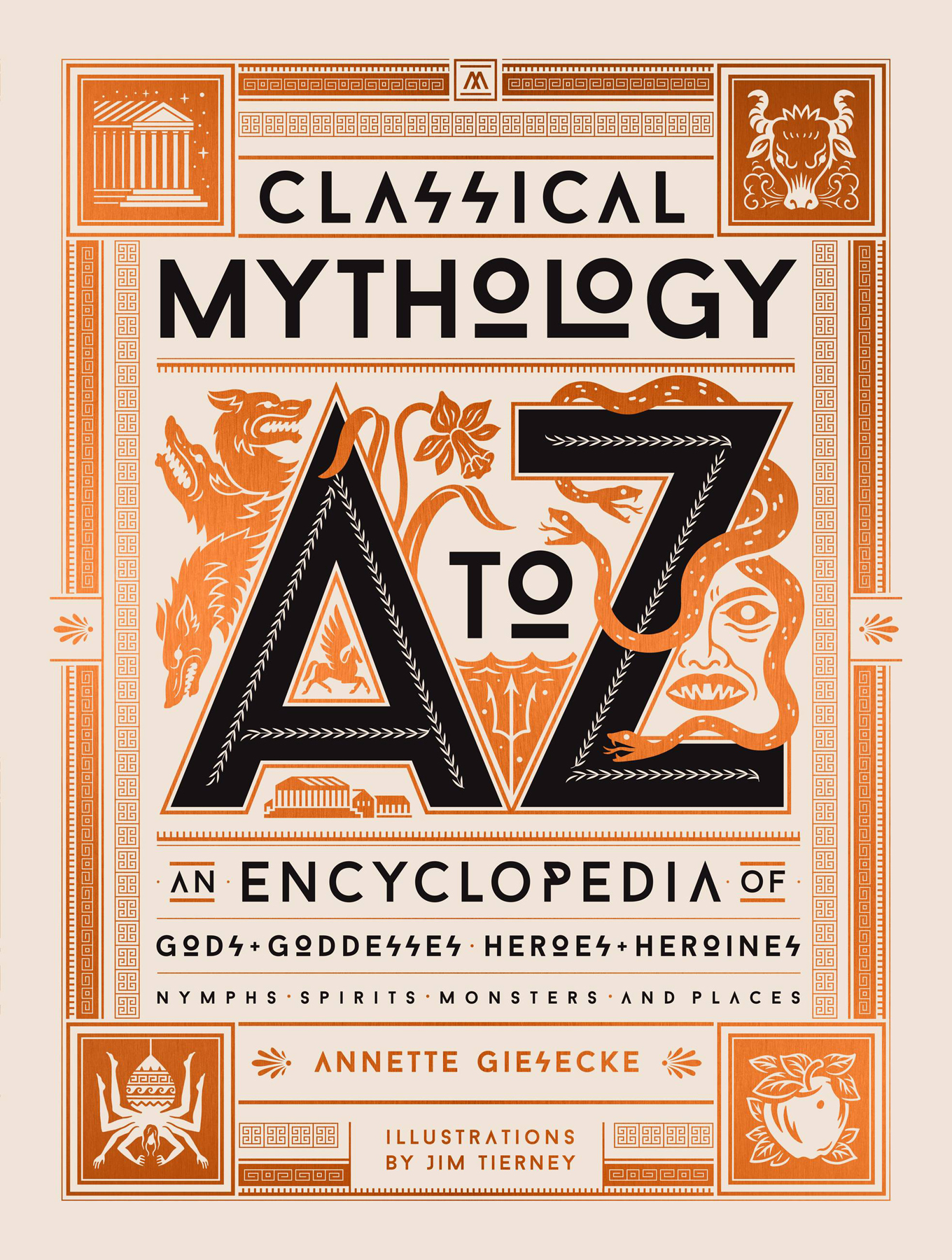
Text copyright copyright 2020 Annette Giesecke
Cover design by HEADCASE DESIGN
Illustrations by JIM TIERNEY
Cover copyright 2020 by Hachette Book Group, Inc.
Hachette Book Group supports the right to free expression and the value of copyright. The purpose of copyright is to encourage writers and artists to produce the creative works that enrich our culture.
The scanning, uploading, and distribution of this book without permission is a theft of the authors intellectual property. If you would like permission to use material from the book (other than for review purposes), please contact permissions@hbgusa.com. Thank you for your support of the authors rights.
BLACK DOG & LEVENTHAL PUBLISHERS
Hachette Book Group
1290 Avenue of the Americas
New York, NY 10104
www.hachettebookgroup.com
www.blackdogandleventhal.com
First Edition: October 2020
Black Dog & Leventhal Publishers is an imprint of Perseus Books, LLC, a subsidiary of Hachette Book Group, Inc. The Black Dog & Leventhal Publishers name and logo are trademarks of Hachette Book Group, Inc.
The publisher is not responsible for websites (or their content) that are not owned by the publisher.
The Hachette Speakers Bureau provides a wide range of authors for speaking events. To find out more, go to www.HachetteSpeakersBureau.com or call (866) 376-6591.
Illustrations by JIM TIERNEY
Print book interior design by PAUL KEPPLE and MAX VANDENBERG at HEADCASE DESIGN www.headcasedesign.com
Production design by Liz Driesbach
Library of Congress Cataloging-in-Publication Data has been applied for.
ISBNs: 978-0-7624-7001-3 (hardcover); 978-0-7624-9713-3 (ebook)
E3-20200829-JV-NF-ORI


T his book is a collection of the gods, heroes, and monsters that populate Classical mythology as well as of the places that feature in stories told about them. The number of myths that have been preserved in the works of ancient authors is enormous, and the numbers of characters and places appearing in them vast. While Classical Mythology A to Z is an encyclopedia of myth, it is not comprehensive. Rather, it is limited to those Greek and Roman characters and places that appear in Edith Hamiltons classic work, Mythology: Timeless Tales of Gods and Heroes, for which it has been designed as a companion. In her own words, it was Hamiltons hope that by reading her book, those unfamiliar with the Greco-Roman world would gain in this way not only a knowledge of the myths, but also some little idea of what the writers were like who told themwho have been proved, by two thousand years and more, to be immortal (Preface, Mythology, 1942). She indisputably achieved her goal, doing so by telling the myths of Classical antiquity in a manner that was faithful to the original sources and, at the same time, fresh, relatable, and timeless in terms of language and expression. For this reason, Hamiltons work continues to serve as an authoritative and accessible introduction to Classical mythology in all its complexities over three quarters of a century beyond its original publication.
While Hamiltons Mythology established this books scope, its contents will be useful to all those wishing to dig more deeply into the world of myth out of curiosity about individual characters genealogies, their exploits, and places they inhabited. Greco-Roman mythology has persisted for millennia beyond its origins, retaining its ancient meanings and accruing new ones while serving as a foundation of cultural memory that has been alluded to in myriad ways and in all manner of creative media. For this reason, ClassicalMythology A to Z will be indispensable to anyone looking to verify, clarify, or connect mythological characters and places to any number of literary, musical, artistic, or even pop culture references. This is a companion to Hamilton, but also so much more.
Entries in this collection have been grouped into four basic categories: deities, humans, monsters, and places. The first category includes immortal gods and goddesses as well as mortal ones. Nymphs, for example, were spirits that were believed to inhabit trees, bodies of water, and other components of the natural world, but they were subject to decline and death. The second category, which focuses on humans, encompasses individual heroes and heroines as well as groups of people, such as the female warriors called the Amazons. Characters of prodigious size and hybrid creatures are here all classed as monsters, regardless of whether they were benign or fearsome; in this case, monster is conceived of in the sense of its Latin etymology, monstrum, a thing or person that is strange but not necessarily evil. Landmarks, regions, bodies of water, mountains, and cities are naturally categorized as places. One particularly interesting aspect of mythological characters and places is the degree to which they resist strict categorization. Inevitably, the categories overlap, as in cases where a human hero becomes divine, or a river is conceived of both as a geographic feature and as a divine personification of the river. Hercules and Asclepius are examples of the former; the Peneus and Achelous rivers are examples of the latter. Gaia was the earth and also the earth goddess. The hunter Orion was a giant, being in this respect a prodigy or monster, but he was neither entirely mortal nor was he entirely divine. Satyrs, hybrid creatures that most would classify as monsters, were, at the same time, woodland spirits. And so on. A system of cross-referencing ensures that entries appropriate to multiple categories can be found in all of them.
Just as categorization poses challenges, so too does the spelling of names. The spellings here follow those used in Hamiltons work, although an effort has been made to indicate alternate spellings as well. The issue of spelling is complicated by several factors. One of them is the transmission of names from the original Greek to Latin and then to English, at least in many cases. An example is Ouranos, Greek god of the heavens. For the Romans, he was Uranus, and this is the spelling with which most speakers of English will be familiar. The Greeks had no letter c, but the Romans used k only infrequently; as a consequence, the Greek god Kronos became Cronus in Latin. Another factor influencing spelling is inconsistency among the ancient authors, even those writing in the same language.
Varying spellings of a given characters name went hand in hand with varying, sometimes conflicting traditions concerning their lives and exploits. The myths themselves, as well as the characters in them, evolved over millennia. When confronted with variants and conflicts, it is important to remember that many or most myths were transmitted orally at some stage, being influenced by cultural shifts and factors such as depictions in art. One example is the cycle of myths surrounding the Trojan War. It has long been known that these tales had their origins in the Bronze Age (very roughly 18001150 BCE ), the time of the Trojan War itselfand, yes, there was a Trojan War, or, more properly, a number of Trojan wars. Aspects of the story of Achilles, as well of his comrades and adversaries, so familiar from Homers Iliad
Font size:
Interval:
Bookmark:
Similar books «Classical Mythology A to Z»
Look at similar books to Classical Mythology A to Z. We have selected literature similar in name and meaning in the hope of providing readers with more options to find new, interesting, not yet read works.
Discussion, reviews of the book Classical Mythology A to Z and just readers' own opinions. Leave your comments, write what you think about the work, its meaning or the main characters. Specify what exactly you liked and what you didn't like, and why you think so.

